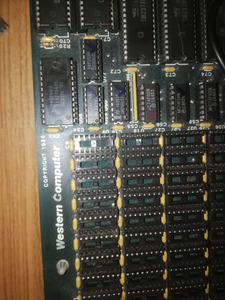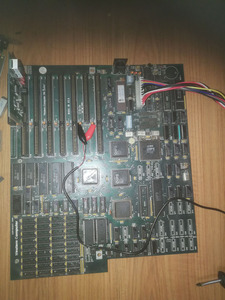First post, by Skip94
Hi all
A friend has asked me if I can repair a 286 motherboard that was in an IBM 5170 case he bought. I've done a bit of work so far, but no success.
The board is branded "Western computer 286 turbo". I can find zero information about it online.
So far I have;
Given the board a thorough wash, as it was filthy.
Cleaned all the socket contacts with phosphoric acid gel, as a lot were mildly corroded. They all now look fine. I also sanded all the legs of the chips before refitting to clean them up.
All 74 series logic chips have been tested as good in my TL866.
The CPU has been swapped for a known good one
The BIOS has been read and it looks to be ok. Having had a lot of luck swapping 286 BIOS's in the past, I have tried a few different BIOS images for the same chipset in there.
I have tried to use the Landmark diagnosic ROMs, but with them installed, there is no activity on a POST card.
So, the symptoms...
It powers on and all voltages seem good. The post card displays codes for a brief moment before freezing on 02. For the first few seconds, there is activity on the address and data bus pins on the CPU, then it just goes high, a couple seconds after the 02 code appears on the POST card.
The CPU is recieving a clock signal according to my logic probe. There is no display on the screen and as far as I can tell, no PC speaker beep, although the PC speaker header isn't labelled, so I've just tried all 4 pin headers I can see.
There is no obvious damage to the board, luckily it has never had a battery installed
I have also removed all the RAM to test, but this hasn't affected anything, it seems to not even be getting that far.
I'm a little stumped where to go next. I assume one of the less generic chips has failed, but I'd rather diagnose further, rather than just start replacing bits, hoping for the best.
Any thoughts?
Cheers
Andrew

